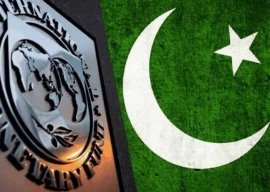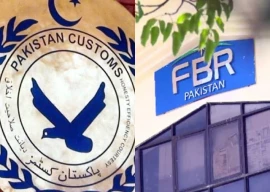
There is only one sector where both, Shaukat Tarin and Miftah Ismail, seem to be on the same page. Both agree that information technology (IT) has the potential to increase export earnings, provide employment to the burgeoning population, improve governance, commerce, education, health care, agriculture, financial inclusion… in short, everything.
But IT benefits cannot be enjoyed unless the nation is digitally connected, which, in turn, depends on robust telecom infrastructure.
In developing countries, most users connect to the internet wirelessly on mobile networks. In the voice communication (2G) days, microwave radios connected mobile towers with the core network. Due to massive data communications, radios no longer suffice, and optic fibre cables are employed to transport the ever-increasing giga-bytes of data.
Ironically, as we move to newer generations of mobile technology (4G, 5G), optic fibres’ role increases.
Optic fibres are highly capital-intensive, having notoriously slow rates of return – typically, 10 years plus. Investments in installing and operating large telecom networks are made primarily by the private sector.
Understandably, their investments tend to be concentrated in urban locations where they are likely to earn more, and fast. In smaller cities, such investments arrive late, if at all.
Optic fibres in Pakistan
One measure of optic fibre penetration in a country is the percentage of towers connected with the fibre. In Pakistan, it is 10%. For comparison, in Thailand, it is about 90%, in Malaysia about 50%, in India about 30%, and in Bangladesh 27%.
In Pakistan, every city is connected with optic fibres, and thanks to the efforts of PTA (obligating new/ renewal of fixed-line licensees to lay fibre cables) and USF (obligating subsidy winners to lay fibres), the fibres connecting cities and villages are increasing. But fibre penetration is poor within smaller towns and relatively less affluent localities of larger cities.
In Islamabad, many streets have up to three optic fibres buried in parallel (where only one would more than suffice). In contrast, large Mohallahs even in the neighbouring Rawalpindi have no optic fibres.
This is understandable, as all fibre investors are Internet Service Providers (ISPs) who must fiercely compete with each other. They cannot share the capacity of their fibres. They would rather lay their own fibres.
Consequently, the fibre-to-the-premises (FTTP) in Pakistan is very low. Out of 119 million broadband subscriptions, only 2 million are fibre connected. It reflects negatively on Pakistan’s ranking on various global indices, where Pakistan is lagging behind all the regional countries (except Afghanistan).
A significant cause of low overall performance is also the unusually high telecom taxes, and the process and cost of Right of Way (RoW). Telecom operators have been clamouring for the government to address these for years. Addressing these demands would undoubtedly speed up investments.
Still, where every ISP has to lay its own fibres, it may take another 25 to 30 years to serve a considerable part of the population.
Possible remedies
An obvious solution is that some neutral entity owns passive optic fibre cables and offers open access to all the ISPs. The ISPs may hire the desired number of dark (unused) fibres to serve their end-users.
Several ISPs may ride on the same set of fibre cables while competing among themselves on service. The business of the neutral owner of passive fibre cables thrives only on renting out the dark fibres to as many ISPs as possible.
The ISPs would also save money, and the hassle of laying their cables every time they go to a new location, thus, lowering their barrier to entry.
Such a venture should be (at least partly) funded by the government, eg, “seed funding”. Every year the telecom sector contributes enormously to the government’s exchequer. Last year, it was Rs228 billion. A part of it should go back to the sector’s development.
There can be several ways in which the above solution is implemented. Let us see the options.
Funding the licensed telecom infrastructure providers: There are 24 telecom infrastructure provider (TIP) licensees in Pakistan. But so far, they have not been much of a success. Unfortunately, many TIP licensees possess ISP licences too. A company with both licences will most likely discriminate against other ISPs. That is undesirable.
Using the incumbent operator: In many other countries, the incumbent operator, eg, BSNL in India, provides passive optic fibre cable infrastructure. But in Pakistan, our PTCL is “privatised” and acts like any private ISP. In this scenario, all other ISPs will have to seek access to passive fibres from their competitor – PTCL. Unworkable.
Unfortunately, this aspect was overlooked at the time of PTCL’s privatisation. AT&T in the US, BT in Britain, DT in Germany, etc were all split into wholesale and retail entities before privatisation.
Creating a new public sector company: A public sector company may be created solely to build and provide the ISPs with open access to neutral passive fibres.
Singapore has done it successfully. A somewhat similar Australian experience (NBN) is not considered very successful, whereas Indian public sector entity BharatNet Broadband, now being merged into another public sector company BSNL, will be fully operational only in 2025.
The problem is that the public sector utility delivery model in developing countries – including Pakistan – has an abysmal track record.
A seemingly better variation could be where the above public sector company owns the passive infrastructure but employs the private sector licensed TIPs to set up, operate and maintain it.
City (or provincial) govts provide passive fibres: A similar model as the last one above, but the provincial government owns passive fibre cables instead of a public sector company. Installation, operation and maintenance may be outsourced to licensed TIPs – selected through competitive bidding – and compensated on a revenue-sharing basis.
It is roughly analogous to the provincial highways, which are owned by the province, and used by the private sector, but construction, maintenance and toll collection are outsourced to the private sector.
The provinces can also cater for the demand side by committing to paying the recurring internet usage charges in schools, healthcare centres, and government offices – all provincial subjects.
Sweden (No 1 on Network Readiness Index) has a private limited company owned by Stockholm City, Stokab. It holds nearly 10,000 km of passive underground optic fibres connecting various parts of the city.
The writer is the former CEO of the Universal Service Fund and is providing telecom (policy and regulation) consultancy services in several countries in Africa and Asia
Published in The Express Tribune, August 29th, 2022.
Like Business on Facebook, follow @TribuneBiz on Twitter to stay informed and join in the conversation.



1725443747-0/Untitled-design-(5)1725443747-0-165x106.webp)














COMMENTS
Comments are moderated and generally will be posted if they are on-topic and not abusive.
For more information, please see our Comments FAQ